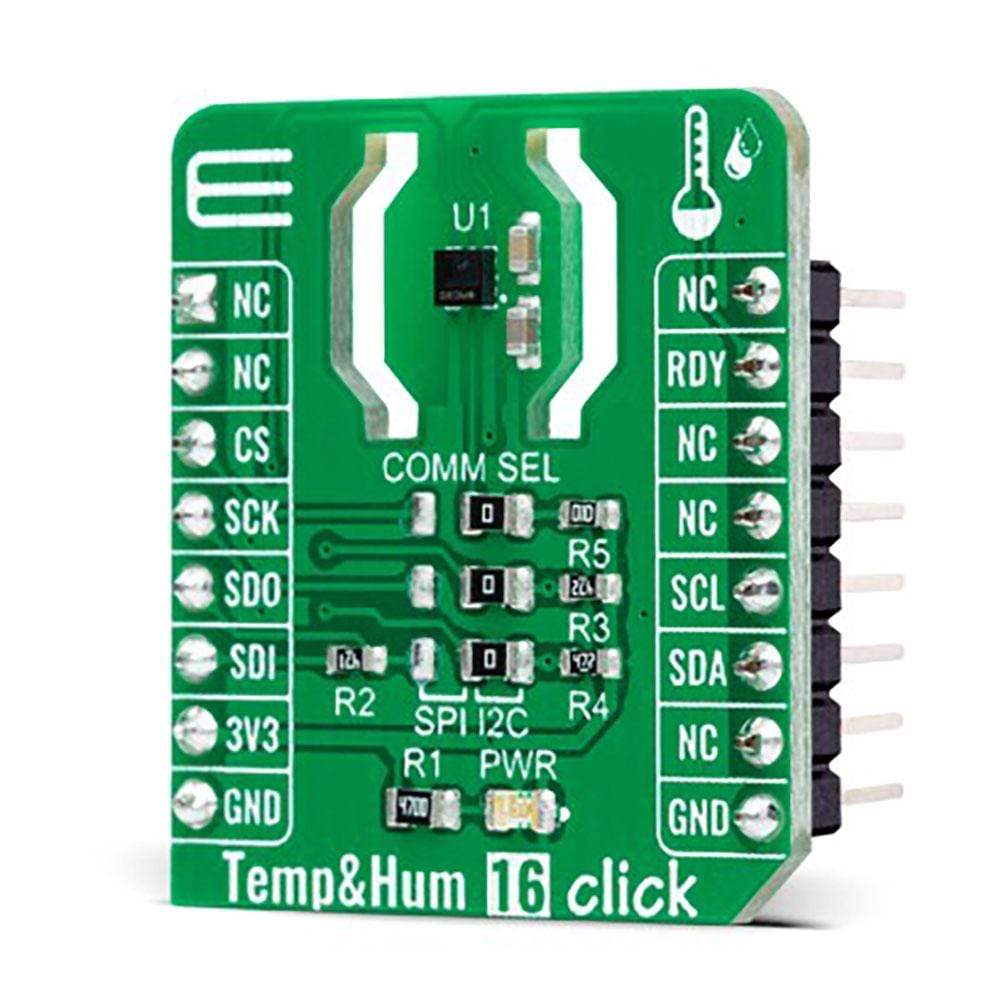
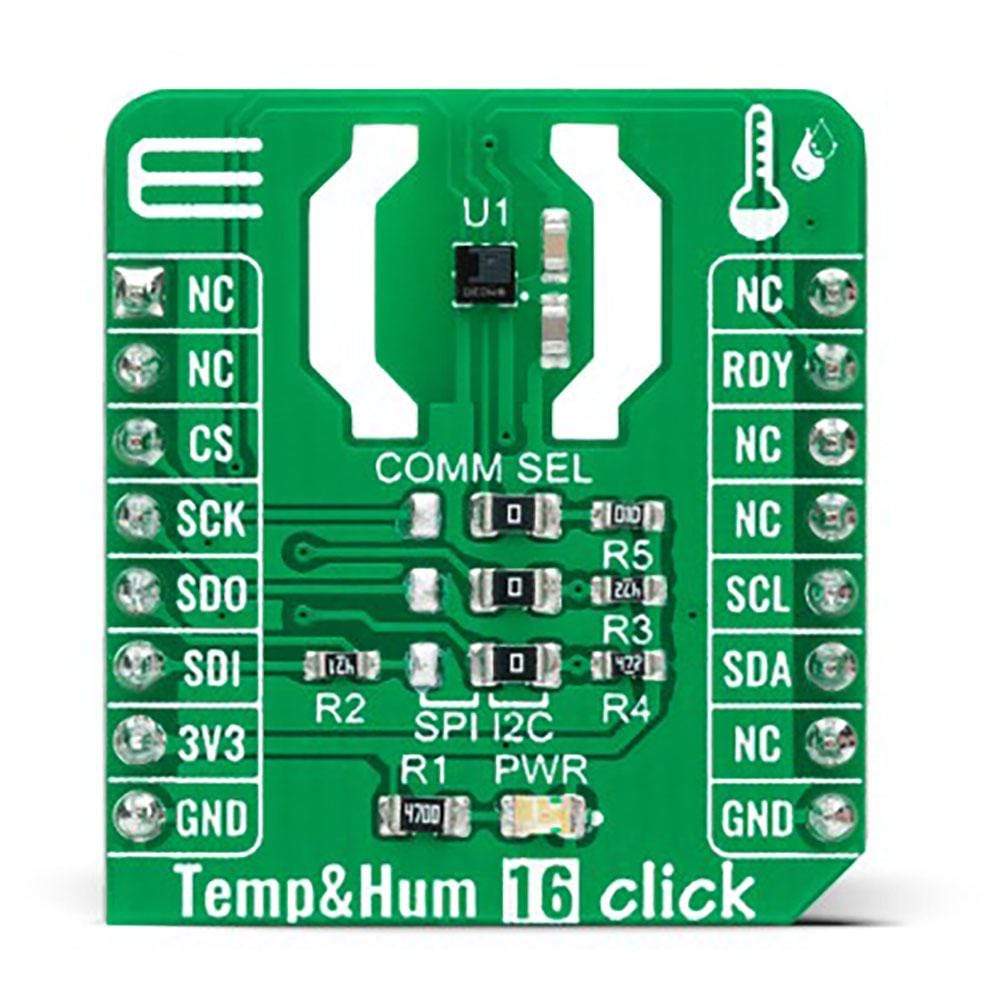
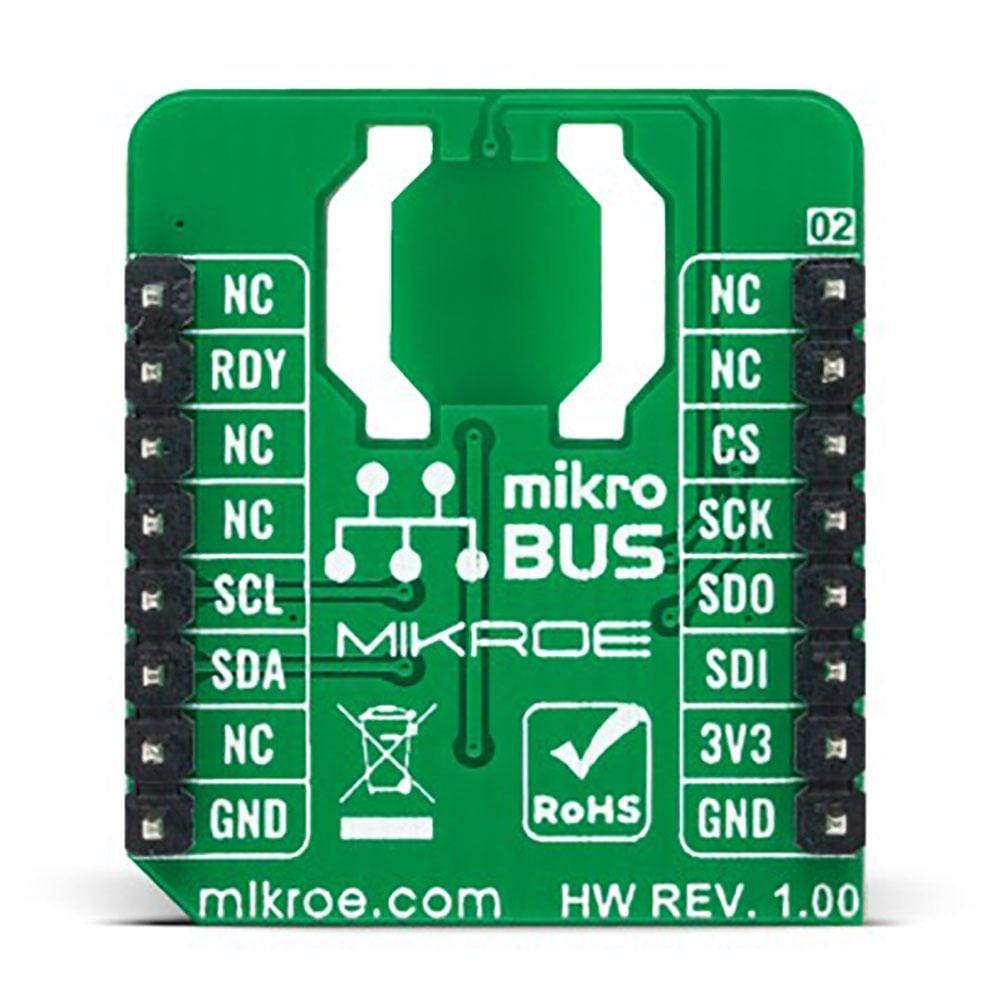
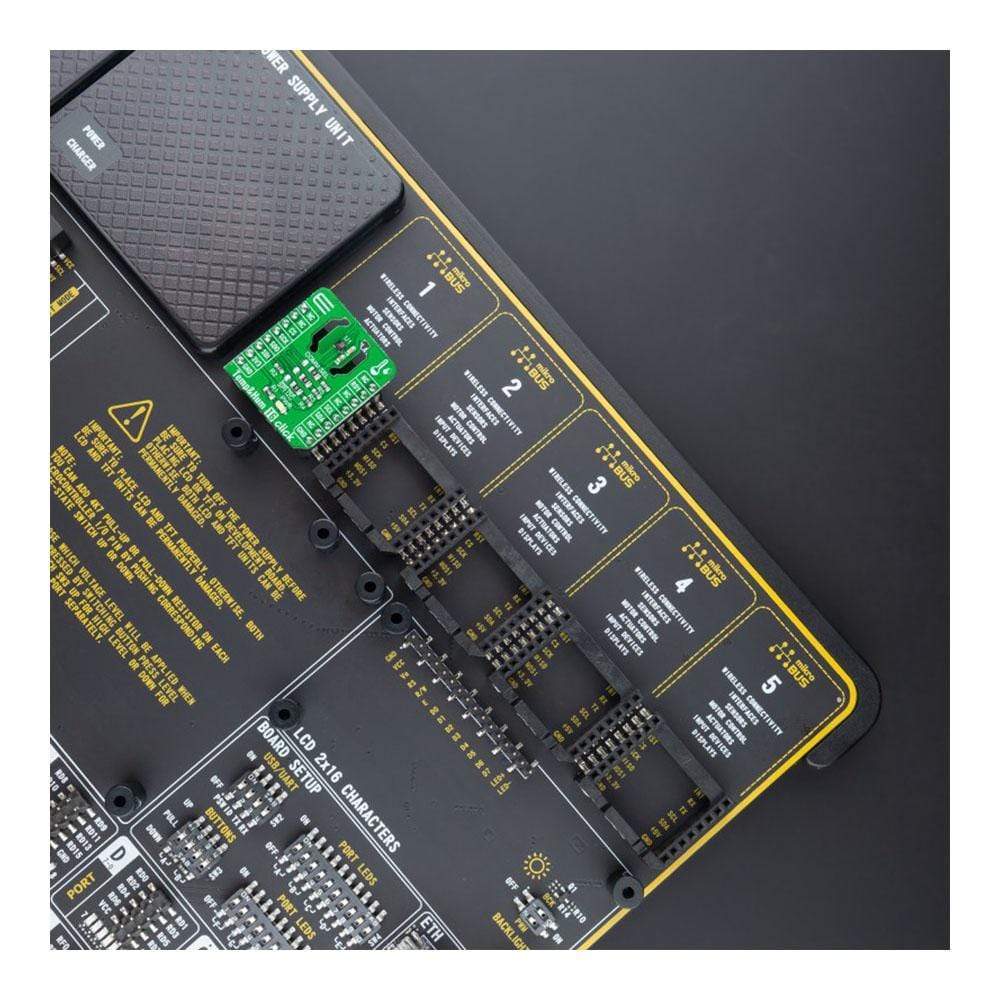
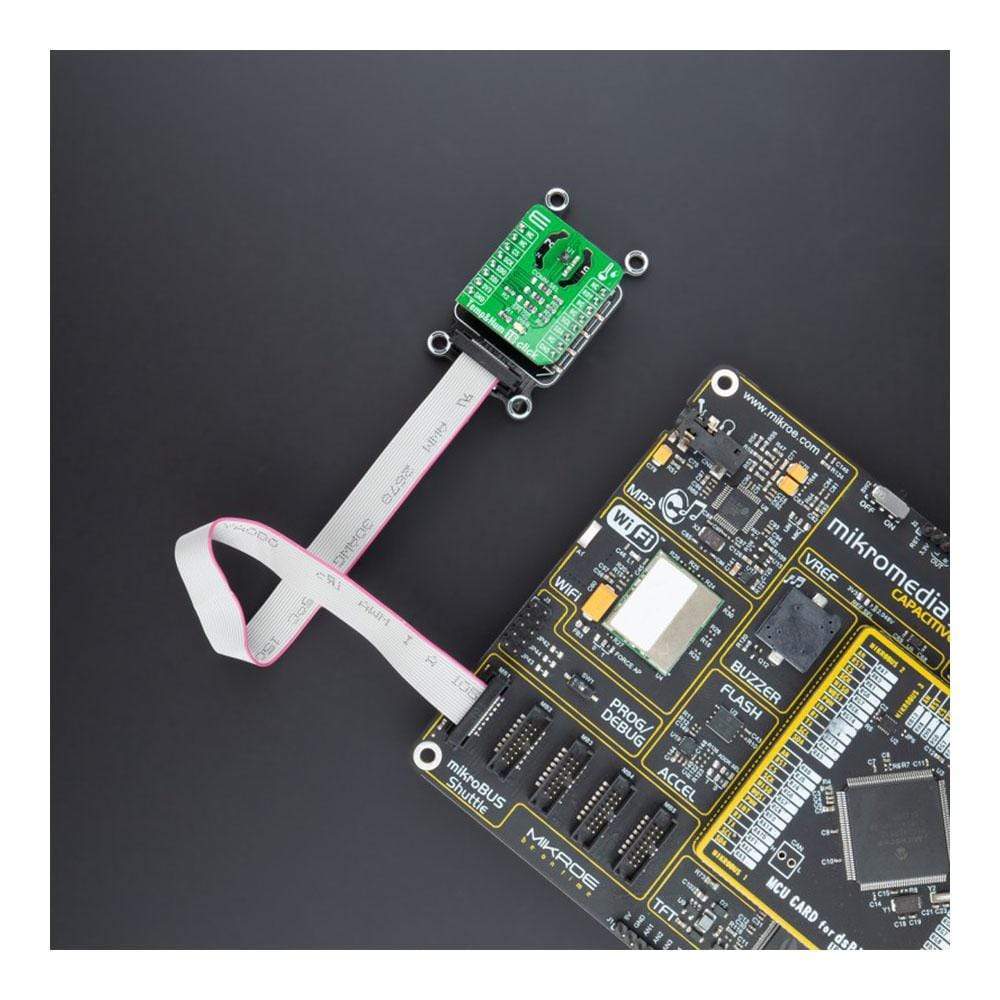
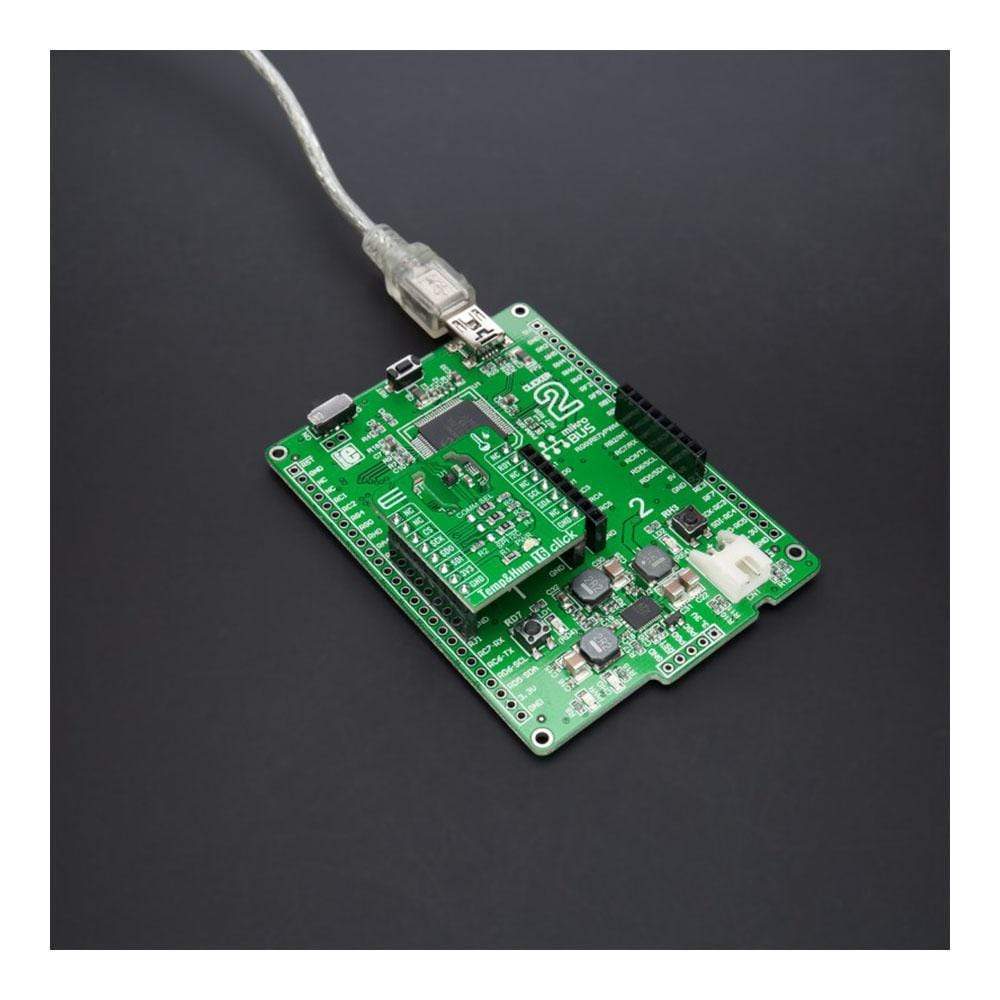
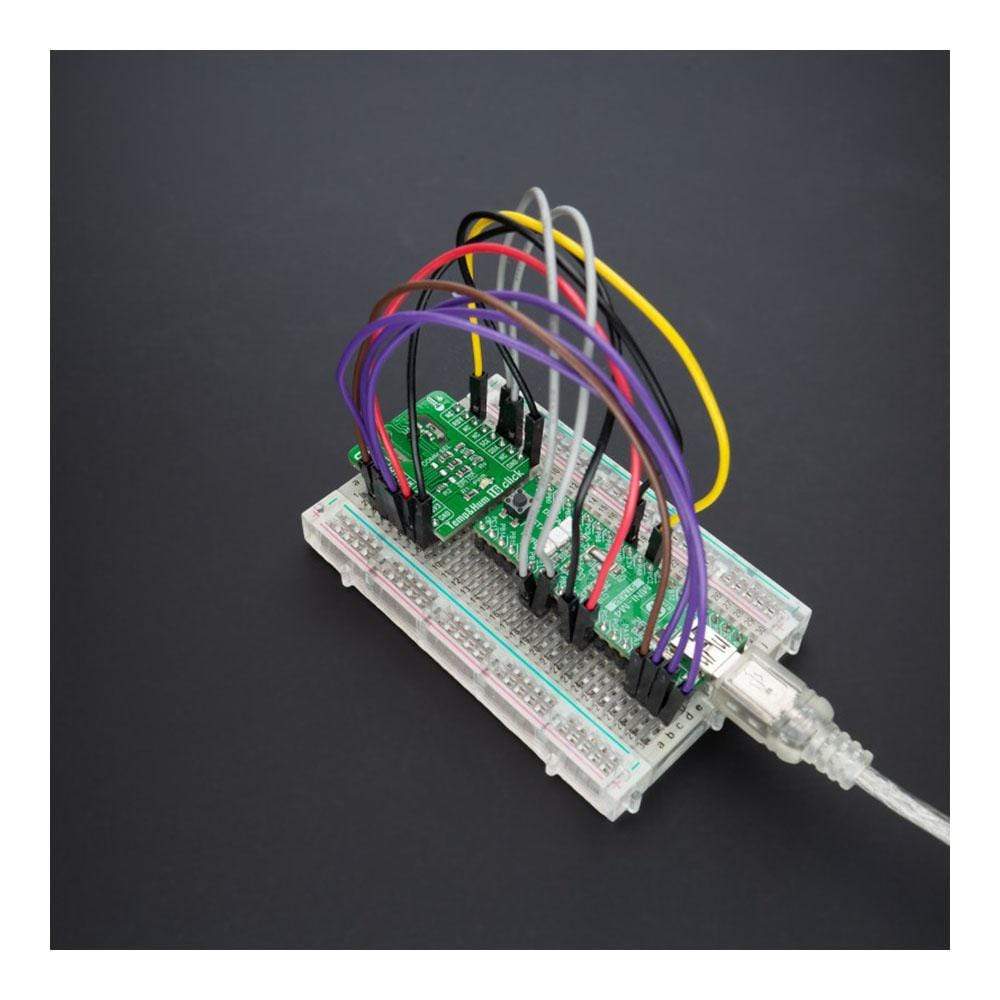
Overview
The Temp&Hum 16 Click Board™ is a compact add-on board that represents temperature and humidity sensing solutions. This board features the WSEN-HIDS (2525020210001), a MEMS-based capacitive humidity sensor with an integrated ASIC and I2C and SPI serial communication from Würth Elektronik. A silicon-based temperature sensor is also integrated within the same package. ASIC contains the multiplier, operational amplifier, analogue-to-digital converter, and other signal conditioning blocks like controller logics and interrupts.
The Temp&Hum 16 Click Board™ converts the analogue signal from humidity and temperature sensing elements into 16-bit digital humidity and temperature values. The WSEN-HIDS is factory calibrated for both humidity and temperature measurements with no further calibration required. This Click Board™ is an ideal solution to be used in various temperature and humidity-related applications.
Downloads
La carte Temp&Hum 16 Click Board™ est une carte complémentaire compacte qui représente des solutions de détection de température et d'humidité. Cette carte comprend le WSEN-HIDS (2525020210001), un capteur d'humidité capacitif basé sur MEMS avec un ASIC intégré et une communication série I2C et SPI de Würth Elektronik. Un capteur de température à base de silicium est également intégré dans le même boîtier. L'ASIC contient le multiplicateur, l'amplificateur opérationnel, le convertisseur analogique-numérique et d'autres blocs de conditionnement de signal comme les logiques de contrôleur et les interruptions.
Le Temp&Hum 16 Click Board™ convertit le signal analogique des éléments de détection d'humidité et de température en valeurs numériques d'humidité et de température 16 bits. Le WSEN-HIDS est étalonné en usine pour les mesures d'humidité et de température sans autre étalonnage requis. Ce Click Board™ est une solution idéale pour être utilisé dans diverses applications liées à la température et à l'humidité.
| General Information | |
|---|---|
Part Number (SKU) |
MIKROE-4733
|
Manufacturer |
|
| Physical and Mechanical | |
Weight |
0.02 kg
|
| Other | |
Country of Origin |
|
HS Code Customs Tariff code
|
|
EAN |
8606027383168
|
Warranty |
|
Frequently Asked Questions
Have a Question?
Be the first to ask a question about this.







